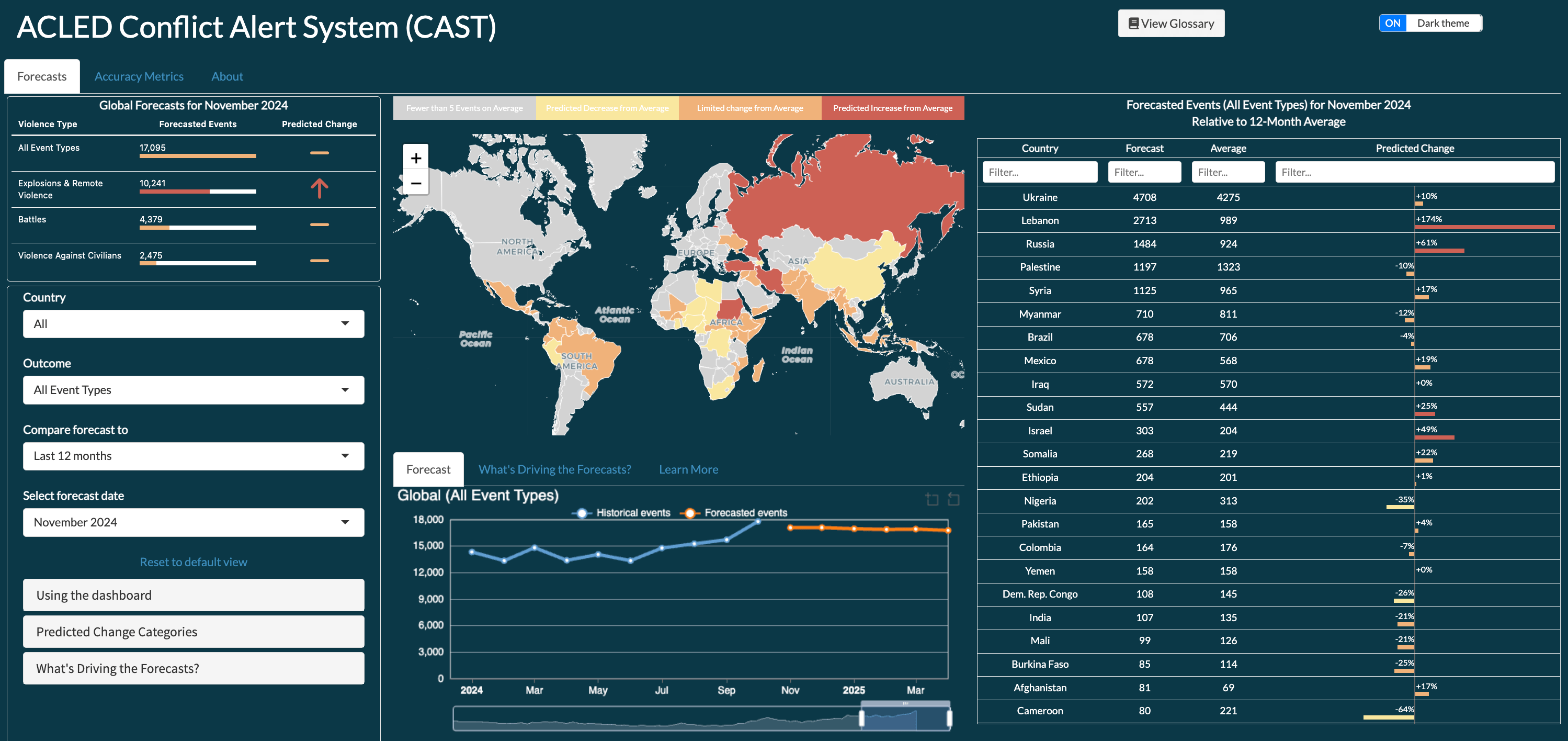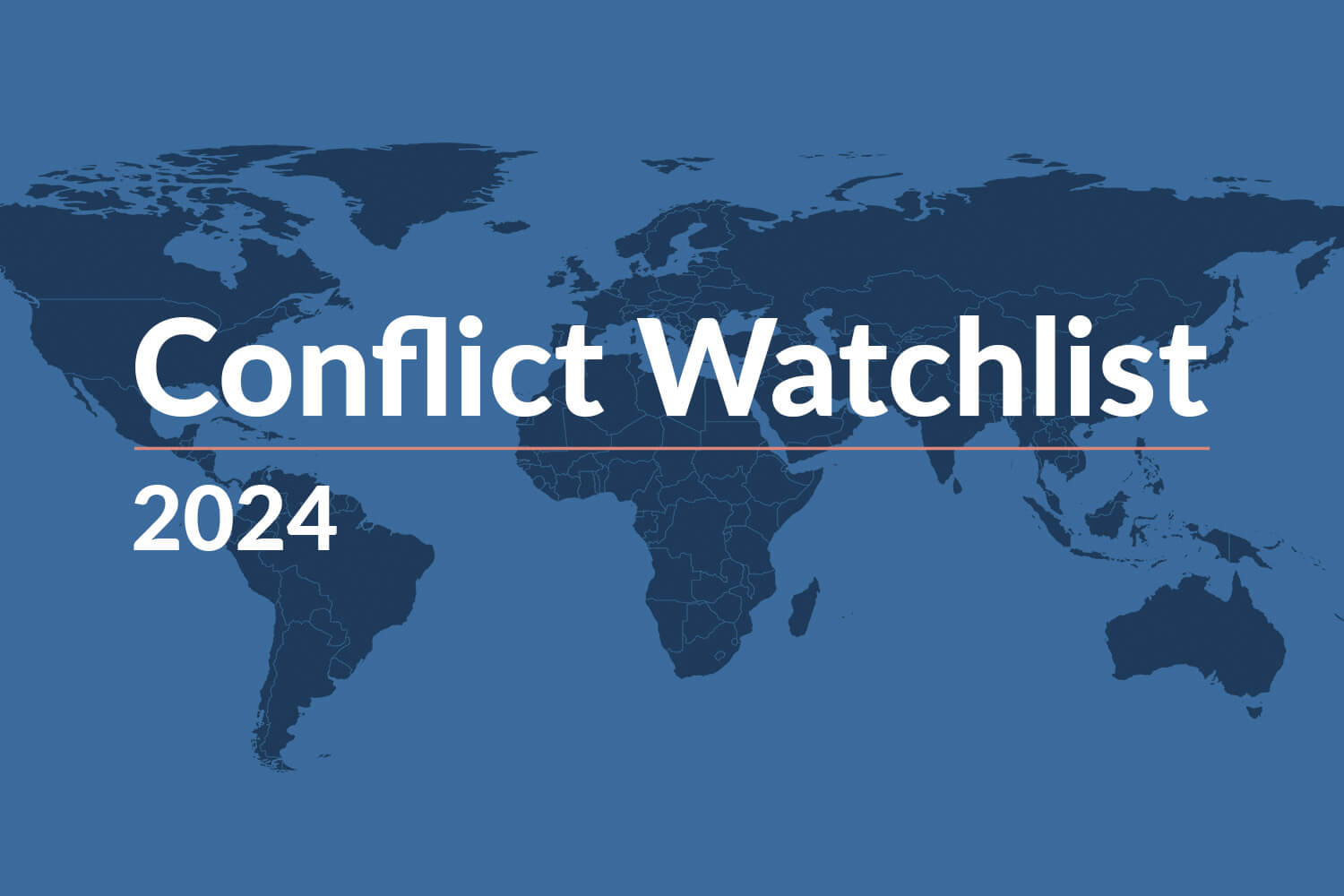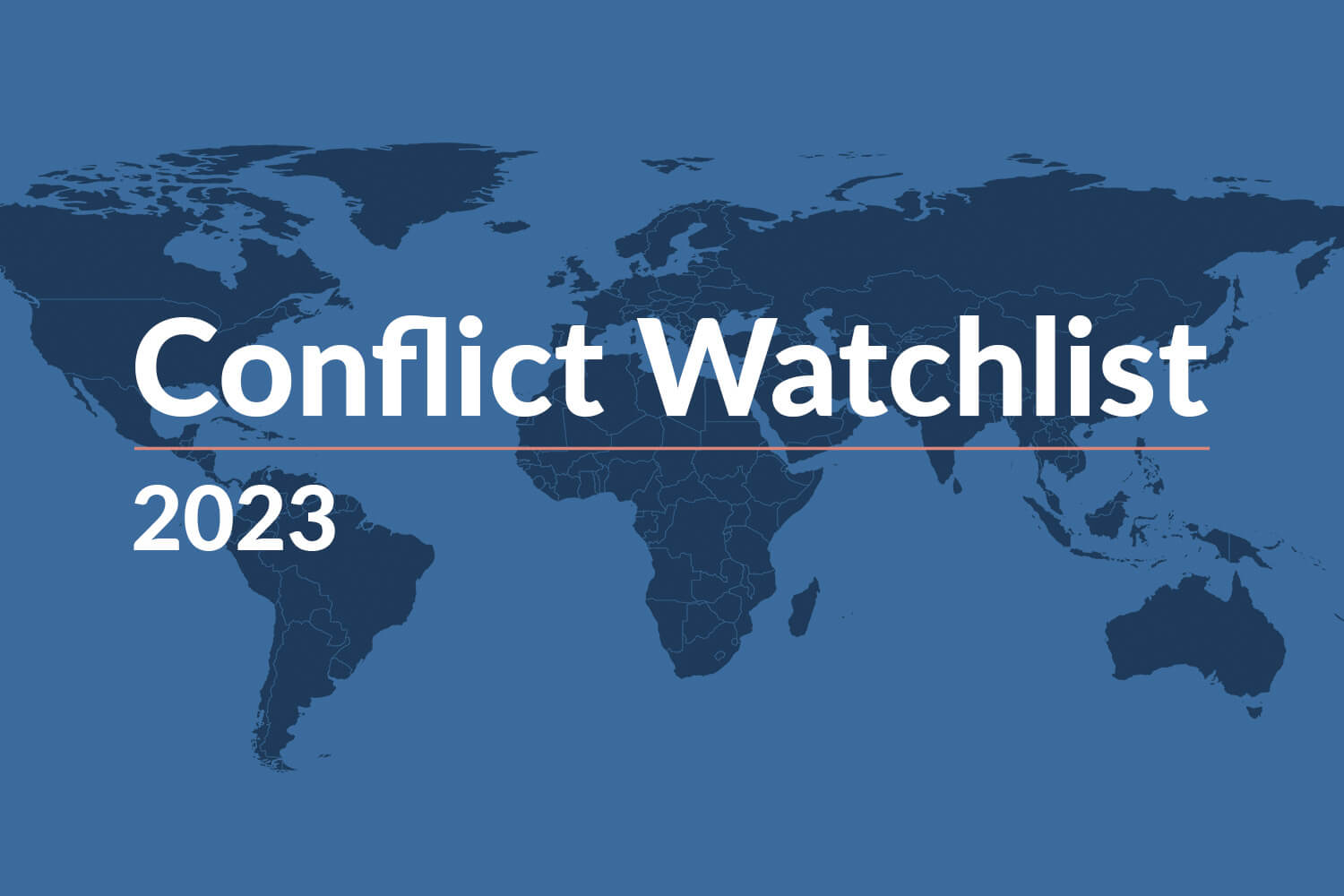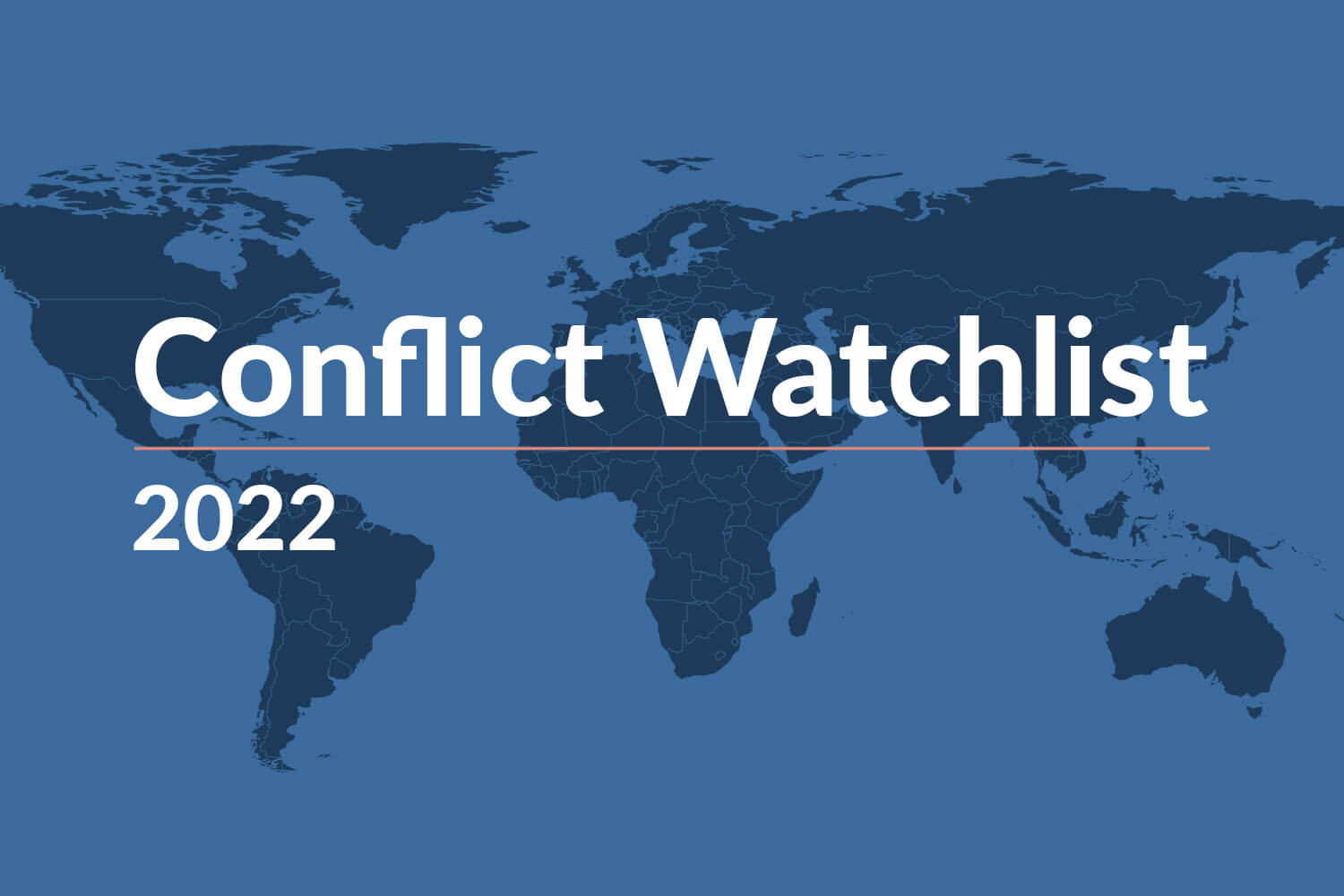Watch the recorded launch of our ACLED Conflict Index & 2025 Watchlist
In ACLED’s Conflict Watchlist, we identify 10 crisis areas that are likely to evolve in the coming year, both for better and for worse. The Watchlist goes beyond showcasing violent hotspots and instead offers a view into some of the world’s most complex crises. As we enter 2025, there is no shortage of intractable conflicts to choose from. But in our selection, we highlight those that represent the more general trends we are seeing from ACLED’s Conflict Index.
International and state violence represent a growing share of overall conflict rates. Conflict event rates grew by over 25% in 2024 compared to 2023, and much of this was due to the conflict emerging between states, and close affiliates of states, across the Middle East.
In the Watchlist, we cover Iran and its allies, and Israel and its neighbors. Iran’s regime is in a precarious and weak state domestically and internationally — its non-state allies are being humiliated and dismantled at pace. However, as demonstrated by the activity in Syria in late 2024, this is the beginning of the problems that may lead to a drastically changed region and the end of an era heavily influenced by Iranian politics. As noted by ACLED’s specialist Luca Nevola: “The strategic balance now favors Tel Aviv, as two of Iran’s key security pillars — regional influence through Axis of Resistance non-state actors, and missile and drone capabilities — appear under strain.”
In turn, Israel has chosen to bear the cost of being an international pariah for the chance to retrieve its military standing, which was doubted in late 2023. Despite the widespread condemnation of Israel’s actions in Gaza, it is on track to drastically alter this region, and forge new — if reluctant — relationships with Lebanon and the Palestinian Authority.
Russia’s war on Ukraine is also reaching a turning point, three years on. ACLED records a 63% increase in the average monthly battles in Ukraine compared to 2023, resulting in steady territorial gains for Russia. Trump’s election in the United States coupled with rising European fears and demands on their individual and collective military strength, are changing the political calculus that had previously sustained Ukraine’s continued support. However, Russia’s maximal demands and Ukraine’s existential dilemma mean that negotiation terms will be extremely difficult to reconcile. Conflict is very likely to continue at present or even higher levels.
Long-running conflicts see new opportunities to continue rather than incentives to end. A significant reason for the doubling of conflict rates since 2020 is that long-running conflicts are getting worse, not better. The resuscitation of long-running conflicts means peace agreements, negotiations, and cessations are now quite rare.
How can conflicts that reverberated for several years — such as those in Syria, the Great Lakes, the Sahel, and Pakistan — regenerate and continue into 2025? By taking advantage of opportunities presented by geopolitical shifts, interconnections across borders through contagious groups, alliances, proxy forces, and creating divisions between neighboring states.
As the larger Middle East crisis becomes a geopolitical cauldron, not only are the relationships between countries remade, but opportunities for non-state armed groups are rapidly shifting. Hezbollah was the world’s largest non-state armed group — but Israel crippled Hezbollah’s abilities to control Lebanon, destroyed its middle-manager level with technological infiltration, and assassinated many of its top leaders. This exposed Iran and Iranian proxies to domestic challenges, perhaps most clearly across Syria.
A weakened Iran led to removal of Bashar al-Assad, despite his attempts to keep out of the fray. Sensing that those who support the former Syrian leader (e.g., Iran and Russia) are stretched, an alliance of rebel groups led by Hayat Tahrir al-Sham (HTS) overtook Damascus on 8 December. This will be a key area to watch in 2025, as will the possible further fallout in Iraq.
Yemen’s Houthis continue to shape their international image and role: While conflict in Yemen has substantially decreased, the Houthis are the Arab world’s fiercest defender of Palestinian rights. They are operating as Red Sea insurgents; and are no longer under the thumb of Iran. The Houthis are very likely to be difficult and unbowed in 2025.
In many other clusters of conflict — including the Great Lakes, the Horn of Africa, the Sahel, and Pakistan — we expect to see continued regression. Pakistan experienced one of the most violent years in over a decade, grappling with fractious politics and rising militancy from Baloch separatists and the Tehreek-i-Taliban Pakistan (TTP). The national and provincial elections in February failed to restore order, and the regime’s game of musical chairs stretched beyond its limits after Shahbaz Sharif of the Pakistan Muslim League-Nawaz (PML-N) — widely seen as the military’s preferred party — was appointed prime minister and formed a new government. This led to an unprecedented breakdown in civil-military relations, marking the lowest point in the country’s history and sparking a political crisis not seen in decades.
Our third theme is in how militias, gangs, and more flexible and mobile groups are taking control of significant parts of states, challenging, and replacing state forces (if central government representatives are present at all).
In Colombia, President Gustavo Petro has been adjusting his Total Peace strategy to negotiate peace with Colombia’s main armed groups after the National Liberation Army (ELN), the Revolutionary Armed Forces of Colombia (FARC) dissidents, and the Gulf Clan took advantage of negotiations with the government to expand their presence and heighten competition among themselves for the control of illicit economies. The government reached a limit in 2024. Security forces’ engagement with armed groups rose by over 20%. As a result, armed groups decreased their conflict rate, remarkably so in the extremely violent border area of Nariño. But Colombia’s continued improvement will also be contingent on political developments in Venezuela, and activity in Ecuador.
In Mexico, a successful election was merely the backdrop for emerging and intensifying gang disputes, evidenced by an 18% increase in the lethality rate of clashes between non-state armed groups. While cartels continue to vie for control over drug trafficking, they have turned to other activities to secure their financial sustainability — including extortion, human smuggling, and fuel theft — leading to heightened competition over illicit markets. Indeed, the election itself demonstrated the stranglehold the violence has across the country. With 20,708 positions at stake across various governance levels, about 500 violent incidents targeting political figures occurred throughout 2024, driven by power brokers and criminal groups seeking to coerce or co-opt politicians and ensure outcomes favorable to their interests.
Overall, the world is beset by these and other conflicts which have contributed to a doubling of conflict rates in the past five years. The Watchlist areas represent how conflicts are distinct and varied, and how contemporary conflicts are often transnational in nature, combining local competitions over political, territorial, and economic authority with international influence. The changing nature of conflict demands that we examine local governance practices, the organization of armed actors, and strategies behind the use of violence. ACLED will continue to focus on conflict politics, geography, demography, and armed groups in 2025.
Conflicts:
A year of multi-front conflict: Israeli military operations in Gaza, the West Bank, and Lebanon
While the IDF has managed to inflict substantial damage on Hamas and Hezbollah, the prospects for lasting peace remain bleak.
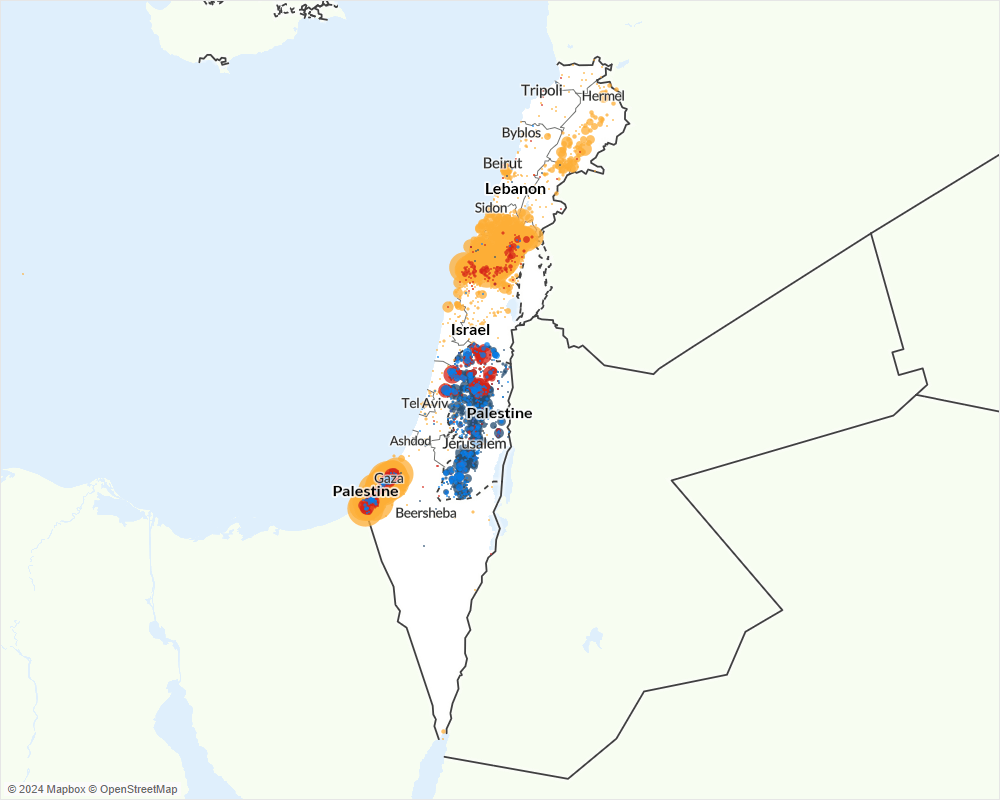
The Axis of Resistance and the regional ramifications of Israel’s war on Gaza
Iran, Iraq, Syria, Yemen, and the Red Sea
The strategic balance of power in the region now favors Israel, as two of Iran’s key security pillars — regional influence through Axis of Resistance non-state actors and missile and drone capabilities — appear strained.
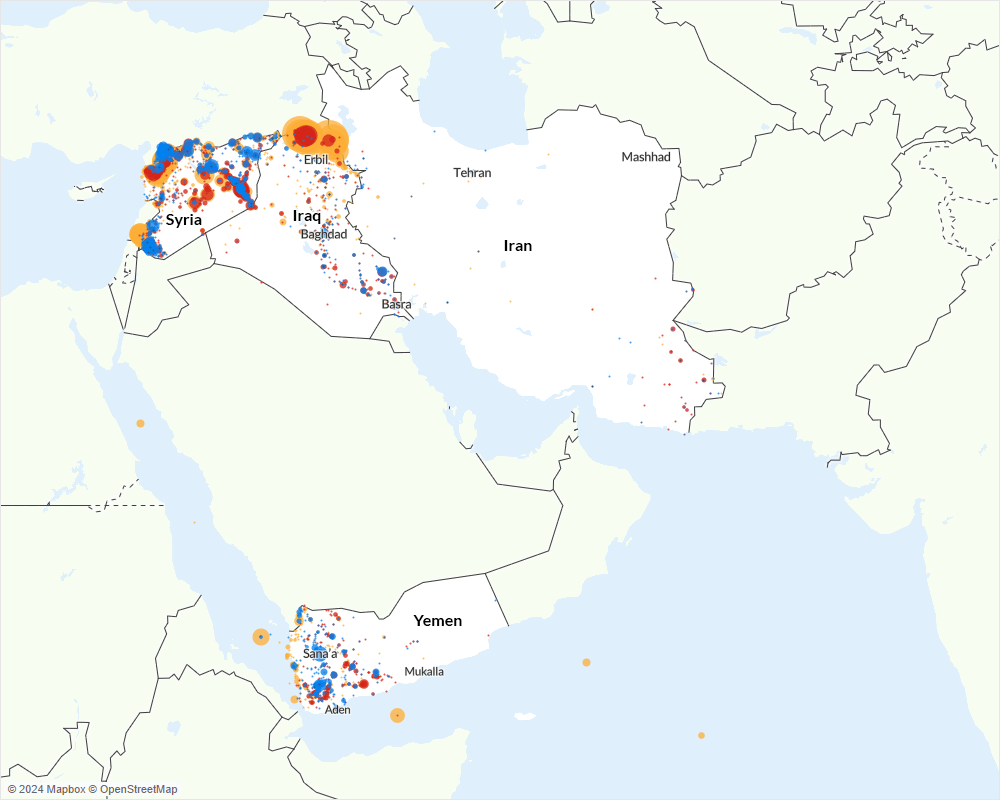
Decisive year ahead for resistance groups in Myanmar as they threaten new territories
Resistance groups in Myanmar will likely focus on consolidating their new holdings, expanding their administration and revenue, and better threatening Nay Pyi Taw while the military perseveres in its indiscriminate aerial attacks on civilian populated areas.
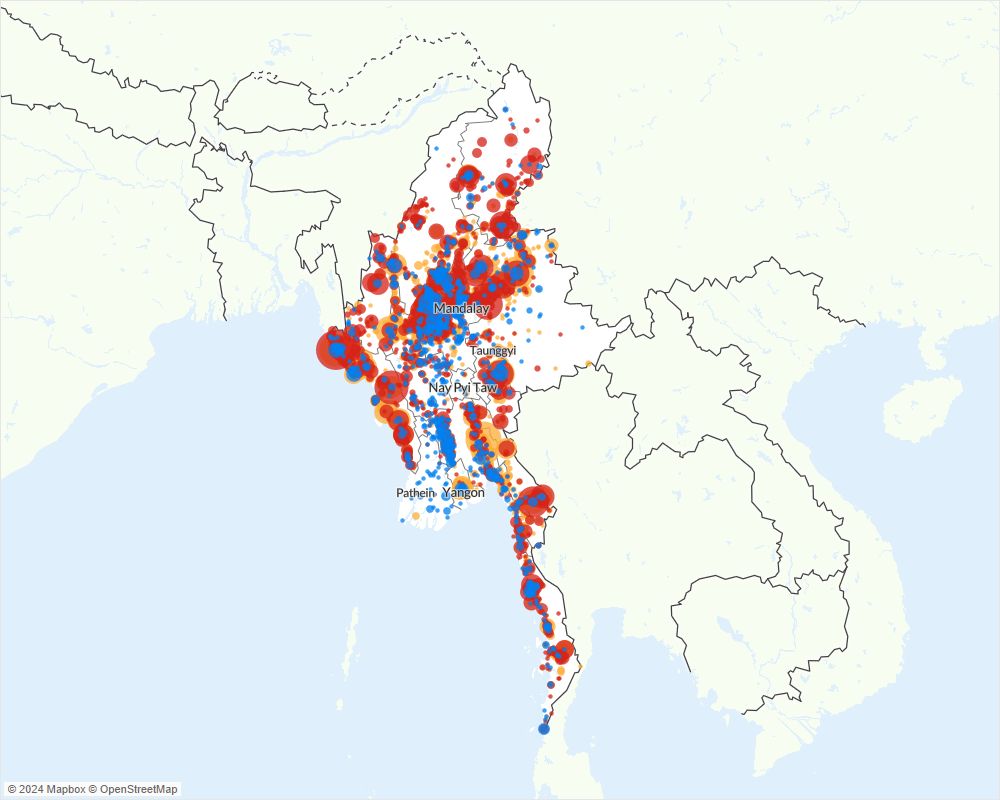
Mexico’s new administration braces for shifting battle lines in the country’s gang wars
President Claudia Sheinbaum, who took office in October 2024, faces a reshuffling gang landscape and potentially heightened violence in the coming year.
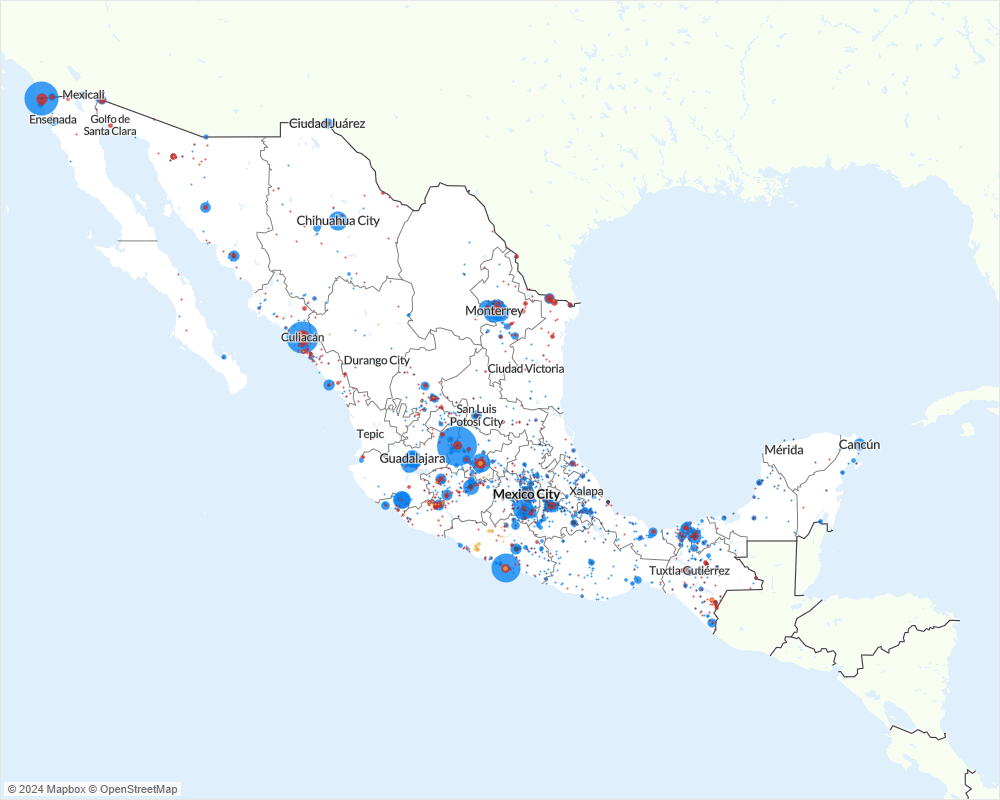
Conflict intensifies and instability spreads beyond Burkina Faso, Mali, and Niger
The ripple effects of regional instability can be observed in the neighboring states of Benin and Togo, where the advance of JNIM operations presents a deliberate and strategic expansion rather than mere spillover. Similarly, the border areas between Niger and Nigeria are becoming focal points of both JNIM and IS Sahel activity.
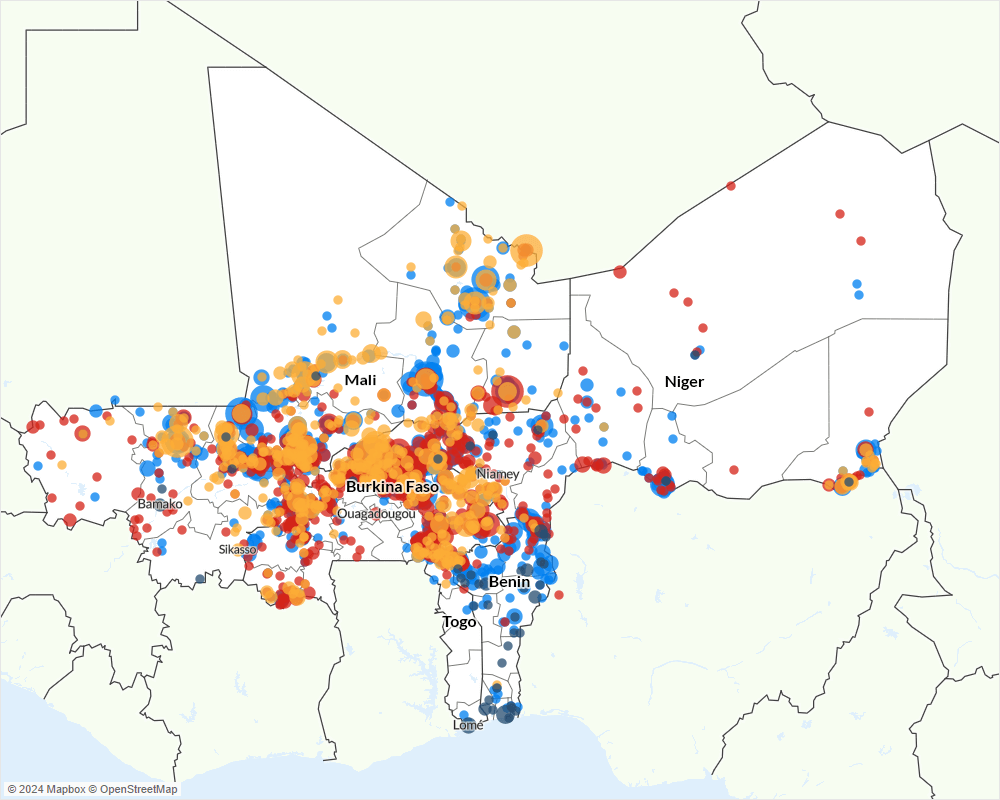
Foreign meddling and fragmentation fuel the war in Sudan
The war in Sudan is at a crossroads. Although the SAF has arguably gained momentum in Khartoum, Sennar, and al-Jazirah states, prospects for peace are slim. Peace initiatives undertaken by the United States, Saudi Arabia, and the African Union have thus far achieved no meaningful outcome.
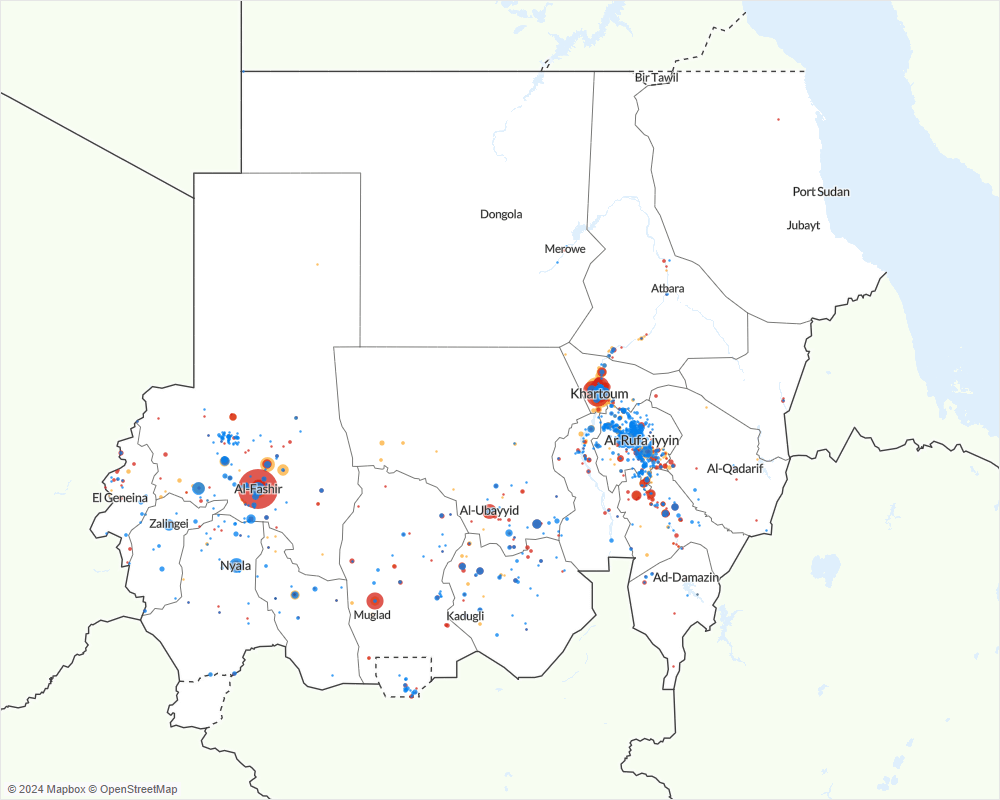
Russia’s protracted war on Ukraine may be reaching a turning point
An exhausted and outgunned Ukraine will face the prospect of resisting further encroachment on its territory, protecting its inhabitants from Russian attacks and their consequences, and persuading allies to stay the course.
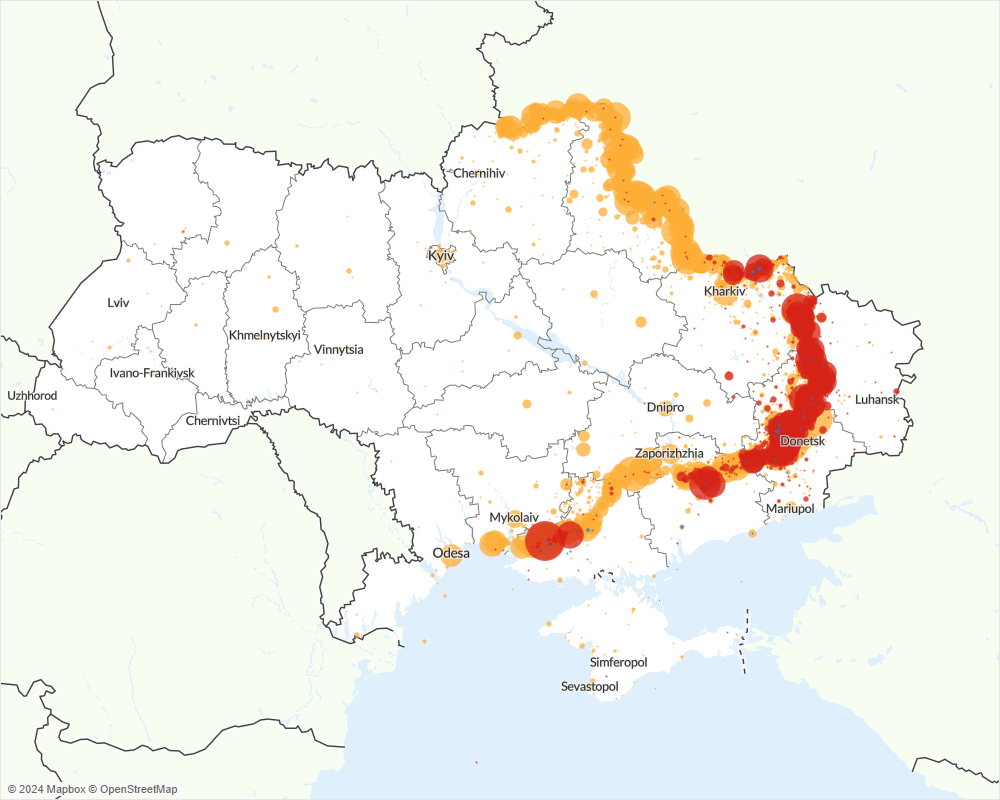
Peace talks in Nariño may be a litmus test for Petro’s bid to end Colombia’s conflict
Regional peace talks could be an important but insufficient step in solving Colombia’s conflict under President Gustavo Petro.
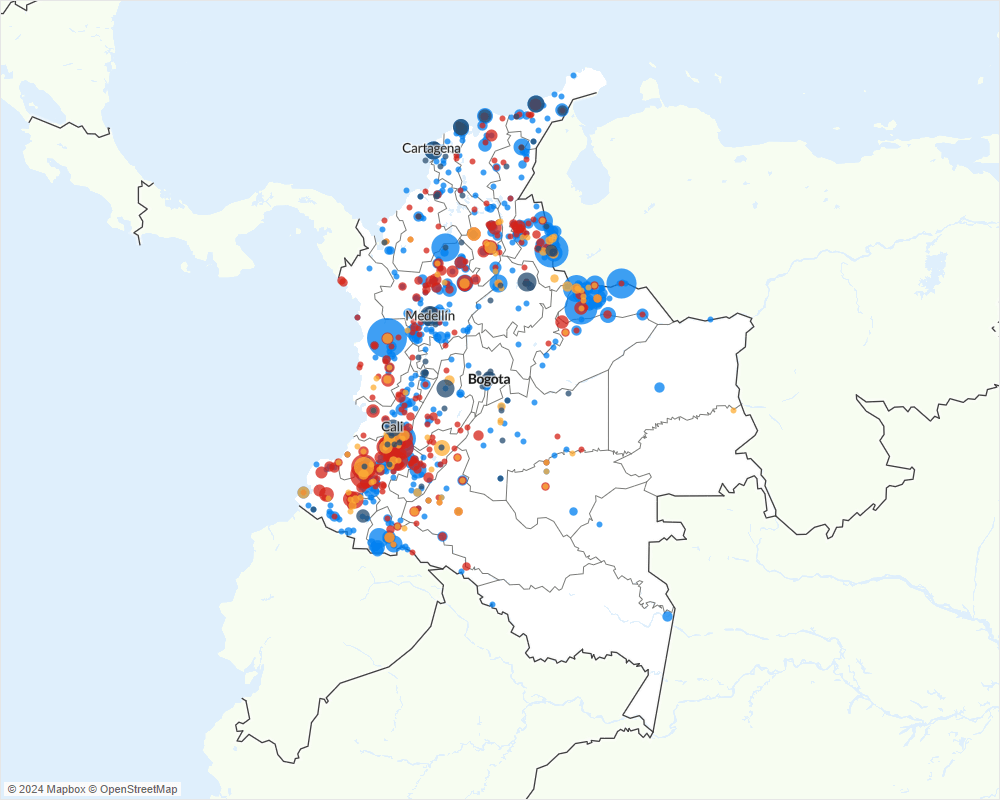
Militants thrive amid political instability in Pakistan
The contentious domestic political situation will likely create more opportunities for militants to make gains by exploiting local anger in 2025 and make it more difficult for the government to engage in a political dialogue or mount a unified challenge against militants.
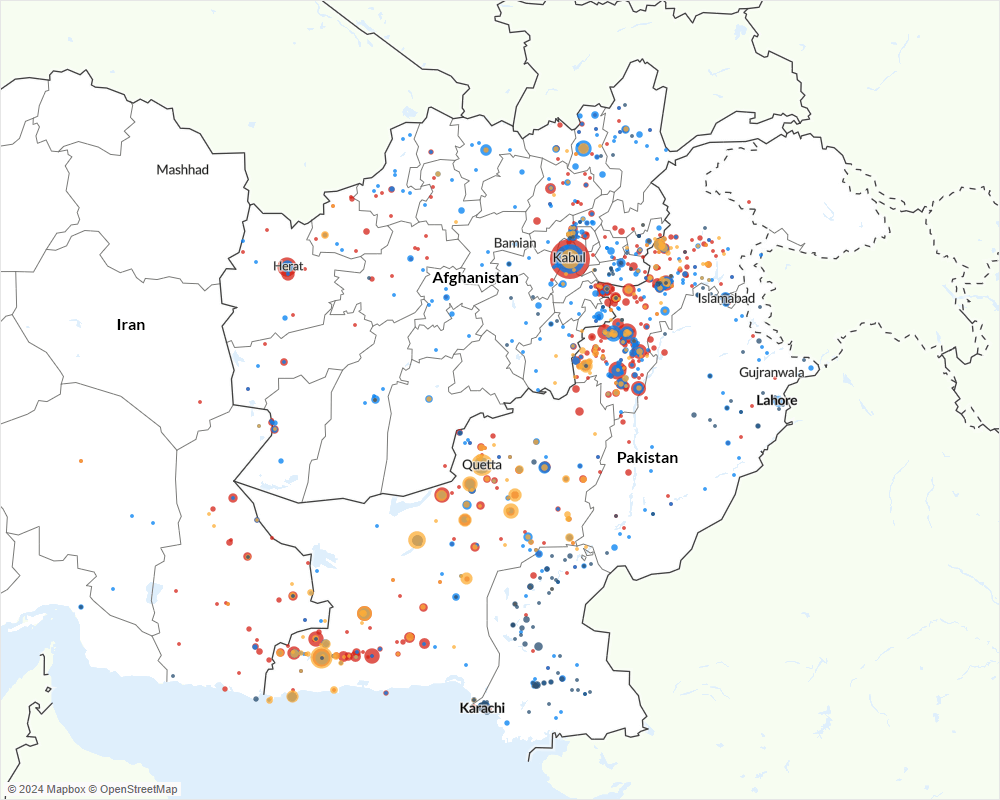
Lasting peace remains elusive between armed groups with international ties
Rwanda, Democratic Republic of Congo, Uganda, and Burundi
Peace agreements remain especially delicate due to the inability or unwillingness of the Congolese and Rwandan governments to rein in violence by proxy groups. Continued clashes between the M23 and allies of the FARDC may spoil peace agreements similar to a previous surge of Wazalendo violence in late 2023.
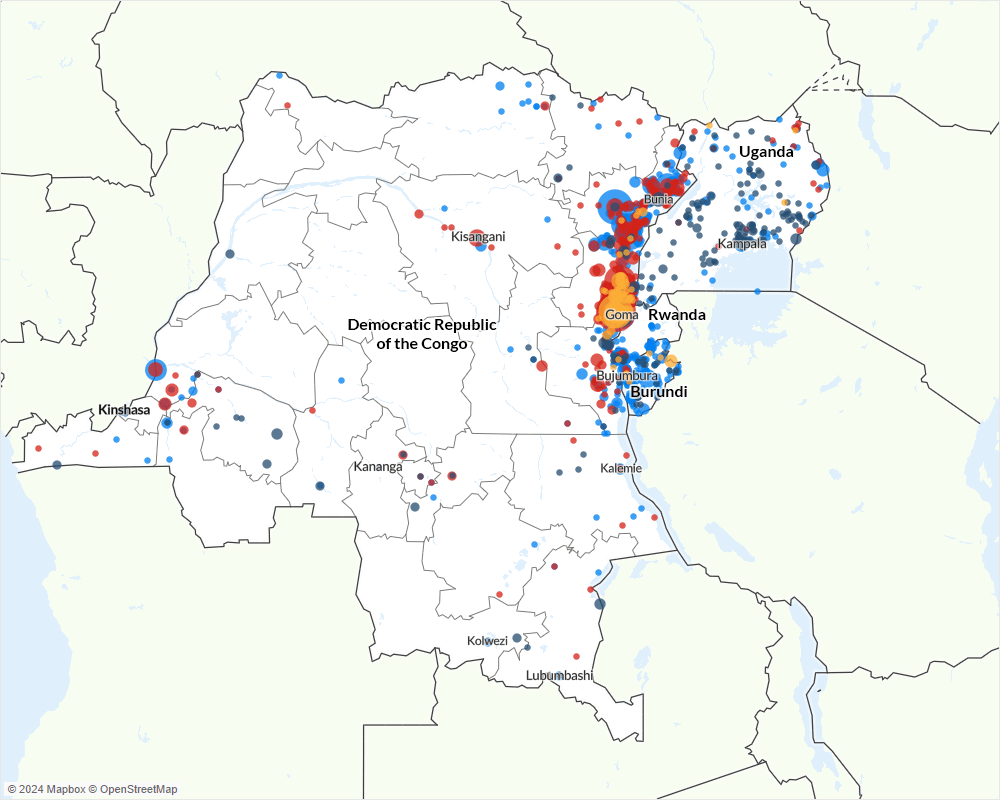
View the ACLED Conflict Index Results for an overview of 2024’s most violent conflicts.

